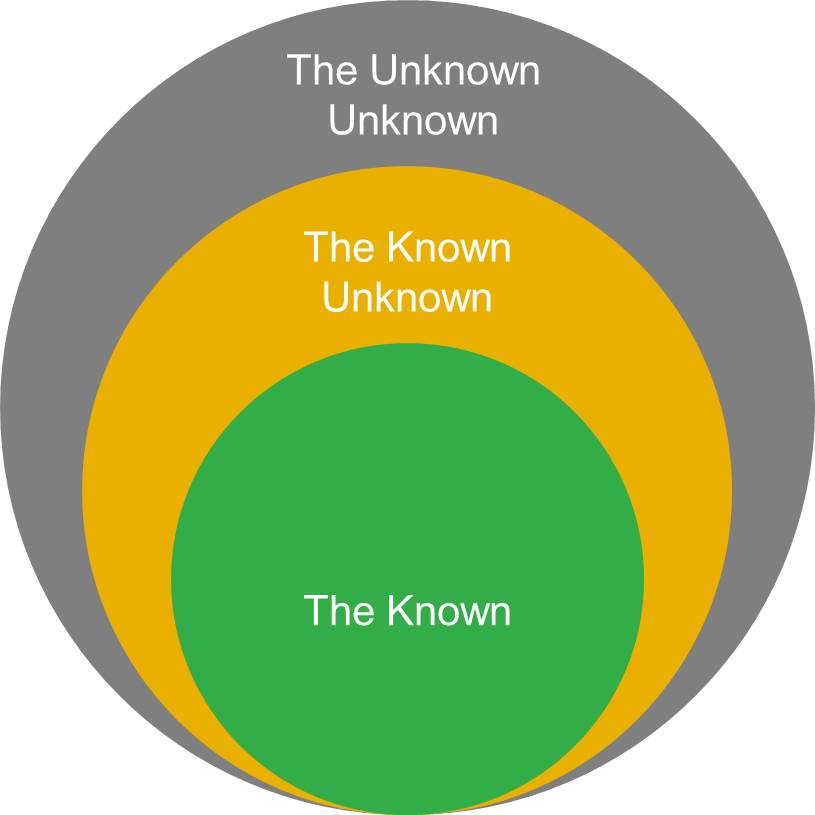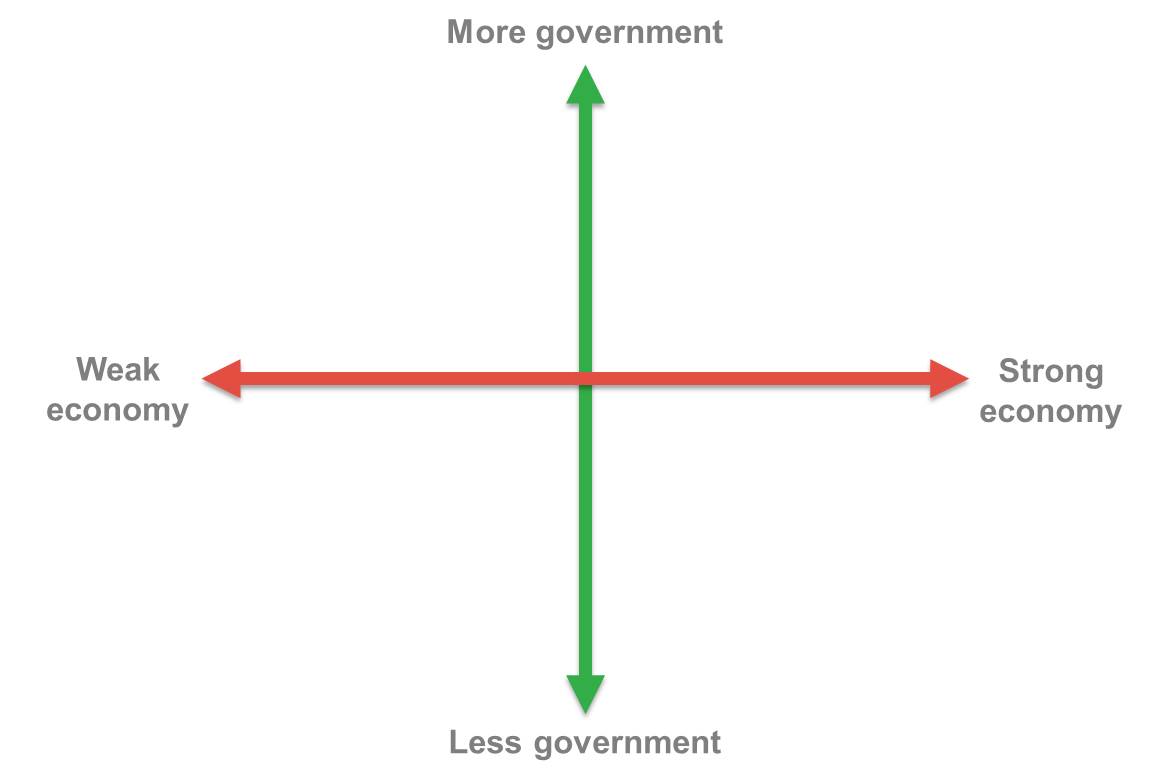8. Drivers
Identification of driving forces external to the decision environment that might nevertheless influence the final behaviour of the system under study.
At a glance
Goal
Identification of external forces – drivers – that could impact the system; identification of trends and key uncertainties.
Input
System boundaries
Methods
Brainstorming, uncertainty-impact analysis, modelling
Relative workload
Medium
Output
- List of identified trends.
- List of trends selected for sensitivity analysis.
- List of identified key uncertainties.
- Two key uncertainties selected for sensitivity analysis.
- External scenarios (visualised on Futures plane).
Steps
1. Identify the driving forces that will mark the future (for instance using document analysis and brainstorming).
2. Assess levels of impact and uncertainty for each of the identified driving forces (see below how to perform Impact-uncertainty analysis).
3. Identify trends and key uncertainties (see below how to perform Impact-uncertainty analysis).
4. Select two (or more, depending on the comprehensiveness of the analysis) key uncertainties.
5. Develop a futures plane with 4 external scenarios (see Developing external scenarios).
Impact-uncertainty analysis
The drivers should be delineated and classified as trends or key uncertainties, using an uncertainty/impact grid.
- Identify the impact of each driving force on the system under study.
- Identify the level of uncertainty regarding the state of each driving force in the future (how easy is it/is it possible to predict what will happen with this driving force in the future?).
- Drivers with high impact and high uncertainty (the first quadrant) are key uncertainties and should be considered in a sensitivity analysis. Identify and select (at least) two independent key uncertainties for this purpose.
- Drivers with high impact and low uncertainty (the second quadrant) are trends and should be taken into account at the next steps of analysis and especially when developing a futures plane.
- Drivers with low impact (regardless of the degree of certainty) can be disregarded.

Developing external scenarios (futures)
Develop external scenarios (“futures”) based on key uncertainties:
- Identify two polar dimensions for each of the selected key uncertainties previously identified
- Develop a “futures plane”, i.e. a grid in which the axes correspond to the key uncertainties (this is why it is important that the uncertainties are not dependent on each other). Each quadrant corresponds to a combination of two states of the key uncertainties and should hence represent a different “type” of plausible future.
- Ascribe concise titles and descriptions to each of the four futures.
Although the very idea is that it is more or less certain how “trends” will develop in the future (since they have low uncertainty), they nevertheless interact with other factors. Hence, the consequences of the trends could well be different in the different futures.
4. Try to identify the consequences of the trends in each future, to better understand what these futures would look like.
Black swan events
Unpredictable, major effect so called “black swan events” can also be considered and envisioned within this modules. Examples of black swan events of the past include the Fukushima nuclear disaster, Brexit, the dot-com bubble and the September 11 attacks. Possible future ones could range from the breakup of the EU or a supervolcano eruption to the attack from an alien civilization, but may also comprise positive technological breakthroughs such as efficient cancer treatment and fusion energy. What the future holds in relation to AI is also unknown.
“Unknown unknowns” are the worst kind of risks; we don’t even know that we don’t know they exist and they can hit us with serious unexpected impacts.

Data collection
Since drivers, by their nature, are external to the sociotechnical system under study, the data collection here has a broader focus/scope than for some of the other modules. Research and business institutes, governmental and non-governmental organisations, academia, consultancy agencies, think tanks and many others analyse and publish reports on different type of trends related to different time horizons. Aspects that are covered include, but are certainly not limited to, technological, digital, political, environmental, food, health, conflict, energy, and economic developments. Some trends are discernable on a country or regional level, whereas others are valid more or less globally.
For more information about data collection, see participation and context
Participatory elements
The initial focus of this module is on factors external to the sociotechnical system under study. Hence, there is no explicit need for consultancy with context-specific stakeholders. However, stakeholders who are knowledgeable on the developments in their respective fields could be consulted for a deeper appreciation of what the relevant drivers might look like and the nature of the associated uncertainties.
Once the drivers have been identified, it could also be relevant to consult with people with context-specific knowledge to get suggestions for how much of an impact the drivers might have.
For more information about participatory elements, see participation and context.
Examples
- Technological trends (personal assistants; wetware-hardware hybrids, …)
- Beyond ownership (e.g. owning music as luxury)
- Beyond choice / making decisions
- Beyond representation (based on collected data it is possible to decide what we want)
- Beyond carbon
- Beyond strategic energy resources (fragmented energy system vs. national/state)
- Marginal costs (full employment vs. full automation), post-capitalism
- Climate change
- Demographic dynamics
Futures plane


Source: Fulton & Scearce, 2004: What if? The art of scenario thinking for nonprofits.
Key uncertainties in Bila, Ukraine
(comfortable indoor climate)
- Prices of energy resources.
- Priority of energy efficiency in national energy policy.
Key uncertainties in Nis, Serbia
(heating and cooling)
- Economic development
- Political will for change in the energy sector at national level
Further reading
- Fulton, K., & Scearce, D., 2004. What If? The Art of Scenario Thinking for Non Profits. Global Business Network.
- Hawksworth, J., & Chan, D., 2015. The World in 2050: Will the shift in global economic power continue. PwC’s Economics and Policy (E&P) team in the UK.
- Ministry of Defence, 2018. Global Strategic Trends: The Future Starts Today. 6th Ed.
- Van Notten, P. W., Sleegers, A. M., & van Asselt, M. B., 2005. The future shocks: on discontinuity and scenario development. Technological forecasting and social change, 72(2), 175-194.
- Walker, W. E., Haasnoot, M., & Kwakkel, J. H., 2013. Adapt or perish: a review of planning approaches for adaptation under deep uncertainty. Sustainability, 5(3), 955-979.

